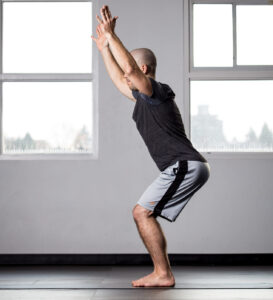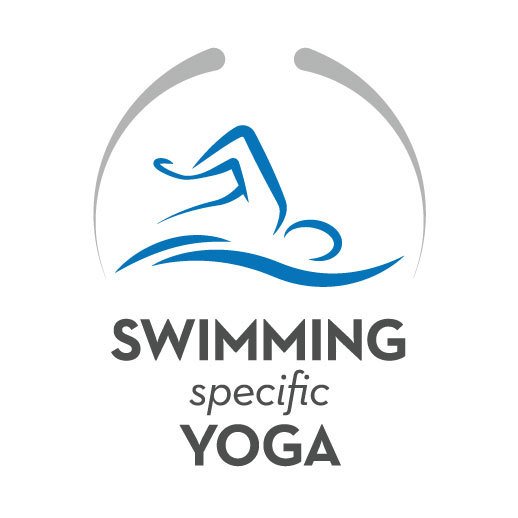Why is it important for swimmers to practice self-talk strategies? Simple, how you think is how you feel and how you feel affects how you perform.
Have you ever come out of a race knowing that you had prepared yourself to achieve your goals, but ended up farther away from them then when you started?
Or maybe the opposite. You have a great workout, but are at a loss for why it happened?
Your results are often determined by your self-talk.
Why am I Such a Chatterbox?
What is self-talk?
Self-talk is a person’s inner voice that interprets their experiences. It is tied to a person’s sense of self and serves at least two functions; instructional and motivational.
It is estimated that we have around 60,000 thoughts each day. That gives our inner dialogue many opportunities to be active.
Talk about being a chatterbox! There are many days our self-talk can fill our waking hours.
Even though this is true we are often unaware of our own self-talk. This leaves the direction of our thoughts at the will of feelings and emotions, which may be positive or negative.
Does Self-Talk Really Affect Your Performance That Much?
No matter how self confident or positive you are negative self-talk will sneak into your mind at some point.
Why is negative self-talk so dangerous? Neuroscientist Rick Hanson puts it in simple terms, “The mind is like Velcro for negative thoughts and Teflon for positive ones.”
For many of us the Golden Rule, do unto others as you would have them do unto you, applies to how we treat others, but not ourselves. Our inner critic often takes over the conversation in our heads.
When our self-talk is negative it has the potential to cause:
- Irrational thinking, which can disrupt simple skills
- Crippling self-statements can destroy self-confidence
- Negative feelings that can break concentration (1)
Developing strong self-talk strategies will help you combat the negative and enjoy the benefits of the positive.
In his book Conquer the Pool Olivier Poirier-Leroy points out a few of those benefits:
- Positive self-talk helps you stay focused on technical aspects of your swimming
- Better self-talk guides you through the struggle during sets or practices
- During moments of high anxiety it is a took keeping you centered and focused on the things you need to do
- It’s a tool for massive amounts of confidence – by leashing your self-talk you have a weapon to combat adversity
Positive self-talk has the potential to take your performance to new heights, while negative self-talk can cause it to plummet. By learning how to direct your inner dialogue you begin to reinforce the positive and transform the negative.
A Cherokee elder was teaching his young grandson about life.
“A fight is going on inside me,” he said to the boy. “It is a terrible fight and it is between two wolves. One is evil- he is anger, envy, sorrow, regret, greed, arrogance, self-pity, guilt, resentment, inferiority, lies, false pride, superiority, self-doubt and ego.
The other is good- he is joy, peace, love, hope, serenity, humility, kindness, benevolence, empathy, generosity, truth, compassion and faith.
This same fight is going on inside you—and inside every other person, too.”
The boy thought about it for a minute and then asked his grandfather, “Which wolf will win?”
The elder simply replied, “The one you feed.”
Tsalagi Tale
Which wolf will you feed?
Are There Ways to Change My Self-Talk?
One of my coaches was fond of saying that you are either practicing good habits or bad habits, but you are always practicing habits. This applies to your self-talk as much as it does to any other behaviour.
Sports psychologist Dr. John Hogg has a four step approach to developing skillful self-talk strategies:
- Become very aware of your customary self-statements and whether these are negatively biased or based on false assumptions
- Change or adjust negative thoughts or cognitive distortions into positive ones using countering and reframing techniques
- Using self-talk to your advantage in specific settings and in conjunction with other mental skills
- Applying techniques to improve self-talk – especially thought stopping and creation of affirmations
How Does Yoga Help Change My Self-Talk?
Yoga challenges the brain and the body in an environment that heightens awareness. It is a mindful practice that gives you an opportunity to bring your attention to the present moment.
With practice you can increase our self-awareness, patterns of thought become more clear, which can enable you to direct your self-talk.
This is an example from my own yoga practice.
The teacher asks us to move into chair pose.
This is a challenging pose that requires a great deal of effort when done correctly. As we move into the pose she reminds us to keep our awareness on our breath, to notice our thoughts without allowing them to steal our attention away from the present moment.
She instructs us to move outside of our comfort zone and we stay in the pose for much longer than I would like.
I begin to get distracted by thoughts of avoidance:
- “I can’t wait to come out of this pose.”
- “How much time until the class ends?”
- “Does this teacher know what they are doing?”
I begin to disempower these thoughts by resisting the temptation to engage with them or judge myself for having them.
Finally! We are guided into a forward fold and taken through a different series of poses. Then out of the blue I hear that dreaded word, CHAIR!
This time we are asked to sink a little deeper into it being reminded to witness our thoughts without attaching our attention to them.
Almost automatically I have similar thoughts of avoidance, but now those thoughts begin to pass with a little greater ease than the first time around.
As I accept my anguish I notice my self-talk with greater clarity.
- “You chose to come to this class, you don’t have to do this pose.”
- “You aren’t ready for this, take a break.”
I did choose to come to this class with the goal of strengthening both my body and my mind. So I take on the challenge of changing my self-talk.
- “This is the perfect pose to strengthen my glutes.”
- “I am strong enough to hold this pose and maybe even go a little deeper.
All of a sudden my feelings of resistance lessen and focusing on my breath becomes more natural.
Phew! Forward fold comes around once again. I am beginning to develop a new love for this pose. But before too long the teacher utters that wonderful word once again, CHAIR!
Things change. When moving into the pose I find myself more willing to take on the challenge and it becomes easier to stay focused.
I am still tempted by similar thoughts, but there is now a space between the stimulus (chair) and my response. This space gives a greater opportunity for me to choose how to react, which in turn gives me a chance to practice new habits of thought.
This time I am not so anxious to come out of the pose. We eventually transition into a few more poses before lying on our backs in the final resting pose of savasana.
Use the Skills You Learn on the Mat Off Of It
At its essence yoga is a mindful practice, which can help bring greater awareness to your self-talk. It also gives the time and opportunity to practice strategies skillfully. In other areas of our lives it isn’t always as easy to be as aware or take the time to change these patterns.
By practicing self-talk strategies on your mat it gives you the opportunity to turn them into habits, habits you can use to enhance your performance in the water.
References:
- Hogg, J, Ph.D. (1995) Mental Skills for Competitive Swimmers. Edmonton, Alberta; Sport Excel Publishing Inc.
- Poirier-Leroy, O. (2017) Conquer the Pool: The Swimmer’s Ultimate Guide to a High Performance Mindset. Victoria, BC; Lane 6 Publishing Inc.
…
To learn more about how yoga can help your swimming performance sign up for our newsletter and join the Swimming-Specific Yoga Community
Visit our website swimminspecificyoga.com to take a 7 day free trial of the Swimming-Specific Yoga Online Studio membership.
With your membership you gain access to over 100 classes ranging from 15-60 minutes that have been created for the specific needs of swimmers.

